By Frank Bosse
(Translated, edited by P Gosselin)
Over the last month solar cycle 24 (SC24) has seen some rather brisk activity. The sunspot number (SSN) reached a value of 82.0, which however was only 77% of the normal value (106) for the 62nd month into a cycle. The southern hemisphere (SH) contributed to most of the overall result in January, outperforming the northern hemisphere (NH) 61:21. The following graphic depicts current activity (in red) and normal activity (in blue):
The figure also shows SC5 in light red. SC5 has some degree of similarity to the current cycle so far.
The next figure shows a comparison of the activity of each indiviual cycle after 62 months into the cycle with little changing over the past few months:
The chart depicts the anomaly of the accumulated sunspots for each cycle 1-24, from the mean value for month 62 into the cycle. SC24 began in December 2008.
So what is the activity determined by and are there indicators for the strength of the upcoming cycle? There is a lot of thought going on over this question. The favorite indicator is the strength of the polar magnetic field during the minimum between 2 cycles.
One of the very good predictions was developed by Leif Svalgaard already at the end of 2004 when he pegged the current cycle would be the weakest in the last 100 years. His 3-month smoothed maximum SSN of 75, which was derived from observations of the sun's polar field, matches up very well to the present counts.
Since this has been confirmed, polar magnetic fields of the sun are recognized early indicators. At Stanford University they are being measured with great meticulousness and have been on the decline since recording began in 1976.
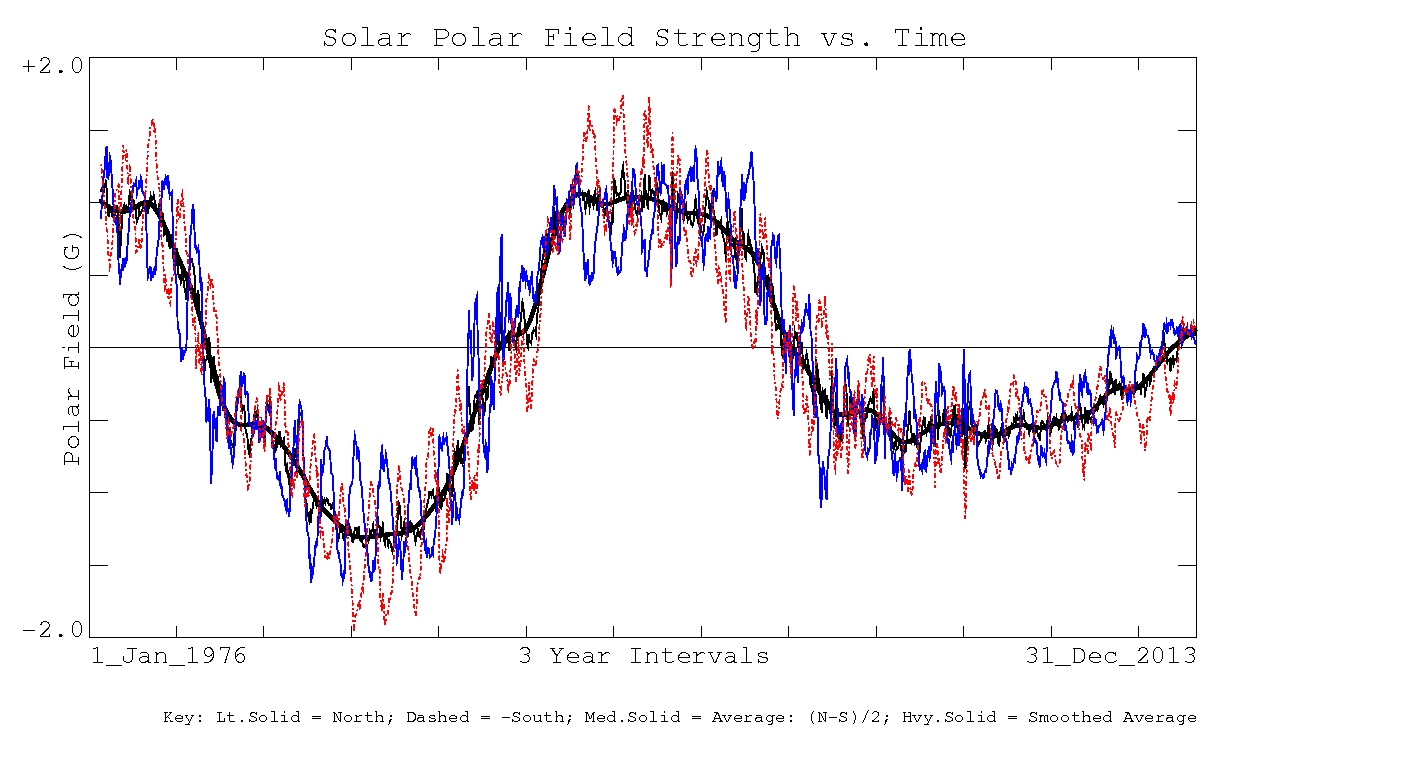
The data for the period of 30 days before until 30 after crossing the zero-point were evaluated and they determine the slope of the quite linear behavior. Also here falling activity is very well depicted. If we set 1980 equal to 100%, then it drops in 1990 to 51%, to 43% in 2000, and to only 22% in 2013. Not only the maximum magnitude of the polar magnetic field at the cycle minimum for sunspots has always gotten less over the last 30 years, but so has the speed of the pole reversal during the periods of SSN maxima!
So what's with the polar field? That we are witnessing an especially weak effect is also depicted by the following diagram, which shows the course of the first 320 days after pole reversal:
What we see is a record: After almost one year since pole reversal, we have once again reached a zero-point, which was measured on January 12, 2014. Never has such a behavior been recorded since the beginning of data recording.
Could this delayed build-up of the polar field be an indication of the strength of the SSN minimum in about 5 years? This magnitude is namely the first predictor for the upcoming SC25. Looking at the data shown here, should we expect a Maunder-like "grand minimum" beginning in 2020? To date all indications point to low numbers...surprises cannot be excluded!
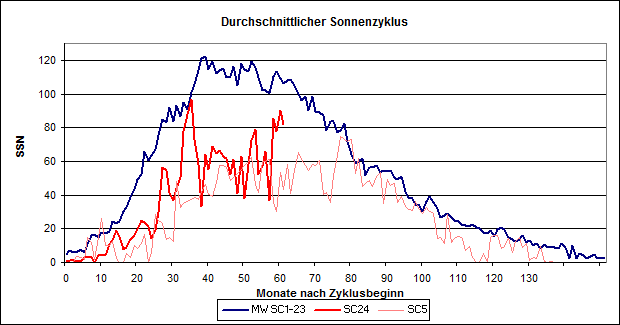
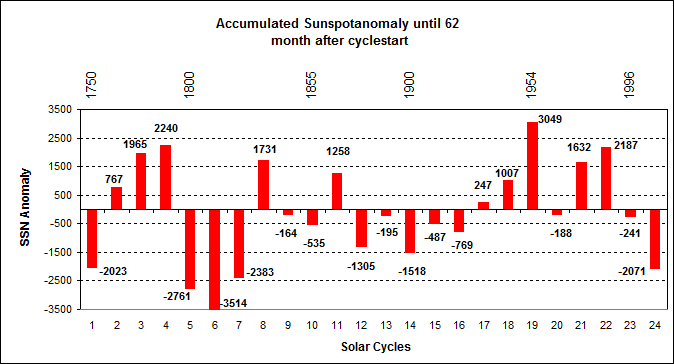
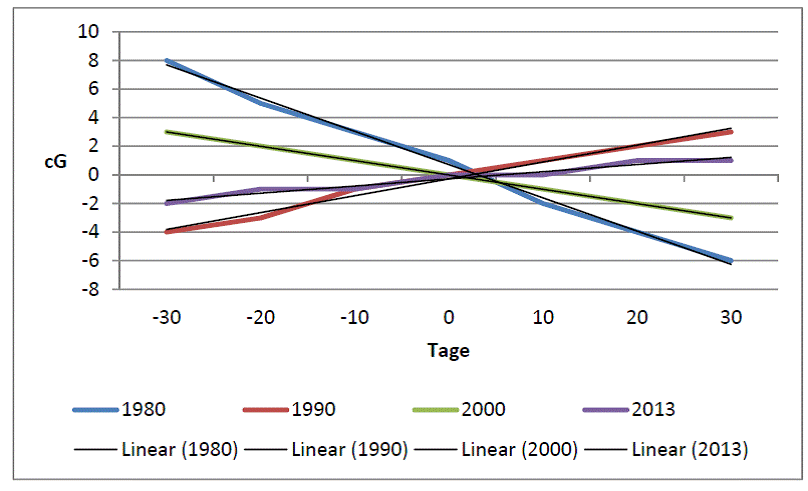
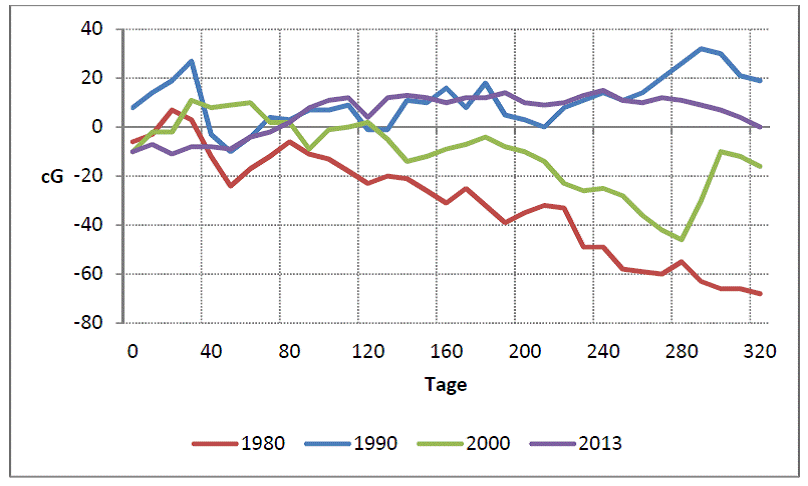



It occurs to me that the Solar Polar Fields might go Rip Van Winkle. It could vary from extremely weak seeding to zero seeding of SC25. Perhaps that is why Leif is leaning towards a Maunder-like situation developing for SC25. What happens next after SC25?? That is the one darned thing about the rapid rise of Science: one always could use data from 400 years ago. Alas, that data was not possible to collect due to technological infancy.
What we do have is the record of the number of Sunspot Groups, from Galileo onwards.
And proxies that tell us something about the Solar Flux and Neutron Counts.
Looking over what we do have, it's like a classical music composition. Small movements of music set in a progression of movements. No two alike. Nature is producing another Suite. I expect it to be an original.